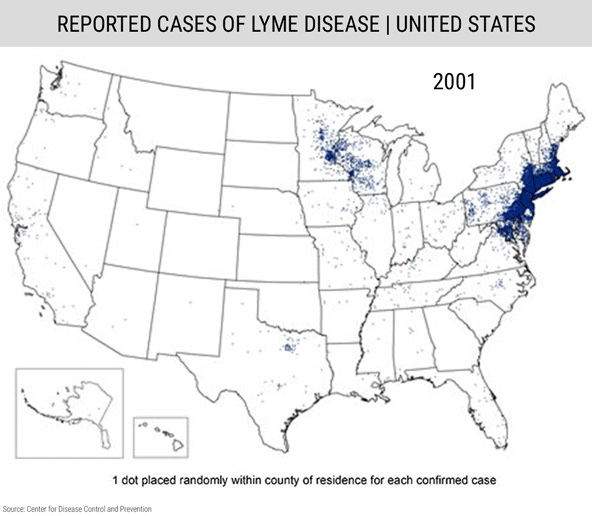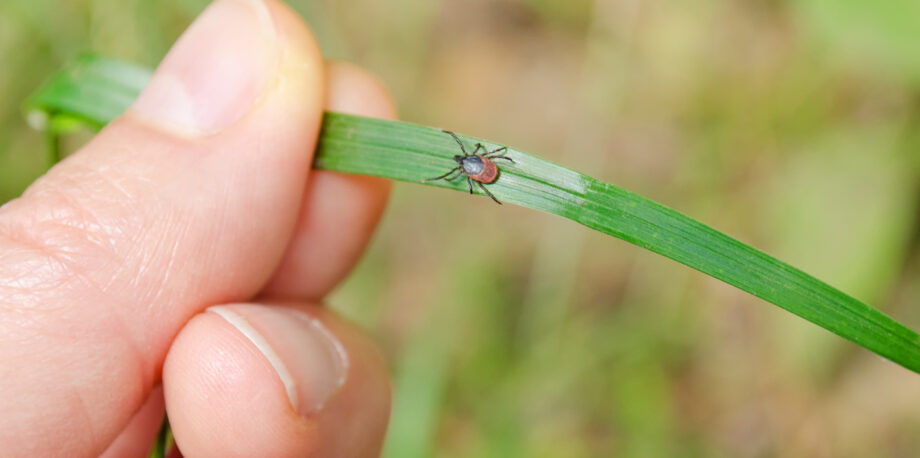October 1, 2019 — When Nancy Fox and Cassidy Colbert began their three-month-long road trip across the United States this past summer, it was with one goal in mind: Prevent the spread of Lyme disease to as many kids as possible. In summer camps from Maine to Michigan, they have taught thousands of children and teens about tick-borne illnesses and tick-bite prevention. As past sufferers of Lyme disease, they have firsthand knowledge of the debilitating nature of this illness — symptoms can include severe headaches, rashes, arthritis, and even partial paralysis. With their organization, the Lyme Education Awareness Foundation (LEAF), they hope to reach as many people as possible during this year’s tick season.
“We don’t want anyone else to be sick like we were,” says Fox, who co-founded LEAF with Colbert in 2018.
Many Lyme disease-related organizations, such as the American Lyme Disease Foundation (ALDF) and the International Lyme and Associated Diseases Society (ILADS) work to help people who have already contracted Lyme disease or are worried they might have it. LEAF takes a different tack, focusing on grassroots education with an eye specifically to reducing transmission. By traveling across the U.S. during the summer, speaking to children who will be frequenting the outdoors in states with the highest incidences of tick-borne disease, Fox and Colbert hope to boost awareness of the disease and how to prevent it as changing land use and climate increase risk in some areas.

As land use changes and climate warms, reported cases of Lyme disease are increasing across the U.S. Click to expand.
The Center for Disease Control and Prevention (CDC) estimates that around 300,000 people in the U.S. are diagnosed with Lyme disease each year. However, of those cases only about 30,000 are reported by state health departments. Over the past few decades, reports of tick-borne illness have increased, almost tripling between 2004 and 2017. Additionally, the number of northeastern U.S. counties considered to have a high risk for Lyme disease increased more than 300% between 1993 and 2012.
According to the U.S. Environmental Protection Agency (EPA), climate change is likely increasing the risk of Lyme disease. Rising temperatures have led to an expansion in tick ranges and have allowed more regions to become suitable for tick proliferation. Additionally, shorter winters can increase the portion of the year during which ticks are active and able to transmit Lyme disease.
All of this has led to a steep rise in reported tick-borne diseases in people, especially Lyme disease. While some regions in the United States, mainly the heavily wooded Northeast and northern Midwest, have long dealt with Lyme disease as a health threat, the expansion of tick ranges has increased the rates of tick-borne diseases in surrounding areas that were previously unaffected.
In the face of this epidemic, advocacy in the form of education can play a role in reducing risk for people living in areas with high Lyme disease incidence or where ticks numbers have begun to grow. On the Lyme Education Tour, Fox reports, less than 20% of kids that they spoke to knew anything about Lyme disease, how to perform tick checks or how to safely remove ticks — even in states on the East Coast that have dealt with tick-borne illnesses for years.

In summer camps and classrooms, Nancy Fox and Cassidy Colbert teach kids simple practices like “tick checks” that can help reduce their risk of contracting a tick-borne illness. Photo courtesy of LEAF.
In addition to spreading the message directly, Fox also developed a K–12 curriculum to teach kids about tick-borne illnesses and prevention. “Getting into schools is difficult, although we’ve had some more interest of late with the epidemic growing exponentially,” she says. Whether through a lesson plan or face-to-face interaction on their tour, the two women of LEAF hope to reach as many kids as possible with their message.
On their tour, Fox and Colbert use games and activities to demonstrate the dangers of ticks to children spending their summers in camps, often located in areas that are heavily wooded. They estimate that they’ve reached more than 2,500 kids in the course of three months, and have even spoken to counselors who say they weren’t aware of many of the prevention strategies known to reduce risk of tick bites. Some of what they teach includes proper attire for preventing tick attachment, tips for removing ticks safely, and even where to send ticks for bacterial testing.
In the face of rising levels of tick-borne diseases, these two women are demonstrating the impact that proactive everyday citizens can have in addressing climate change risks. They are convinced that education can be a crucial tool for helping save children from the devastation of Lyme disease as the disease spreads across the country.
“What we do,” Fox says, “is at least make them aware.”
Editor’s note: Alina Dain wrote this story as a participant in the Ensia Mentor Program. The mentor for the project was Lindsey Konkel.
Related Posts
Ensia shares solutions-focused stories free of charge through our online magazine and partner media. That means audiences around the world have ready access to stories that can — and do — help them shape a better future. If you value our work, please show your support today.
Yes, I'll support Ensia!




